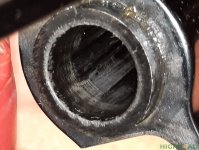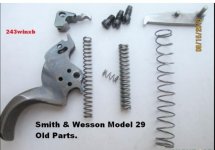STORMINORMAN
Member
The number of modern revolvers actually damaged by reasonable reloads are probably less than the number of owners who would ever in their entire lifetime shoot enough unreasonable rounds to damage them...?
Just an IMHO.
Cheers!
P.S. If you are truly worried that a 357 Magnum K-FRAME is going to somehow wear out prematurely, just go ahead and get an L- or N -FRAME.
Just an IMHO.
Cheers!
P.S. If you are truly worried that a 357 Magnum K-FRAME is going to somehow wear out prematurely, just go ahead and get an L- or N -FRAME.



